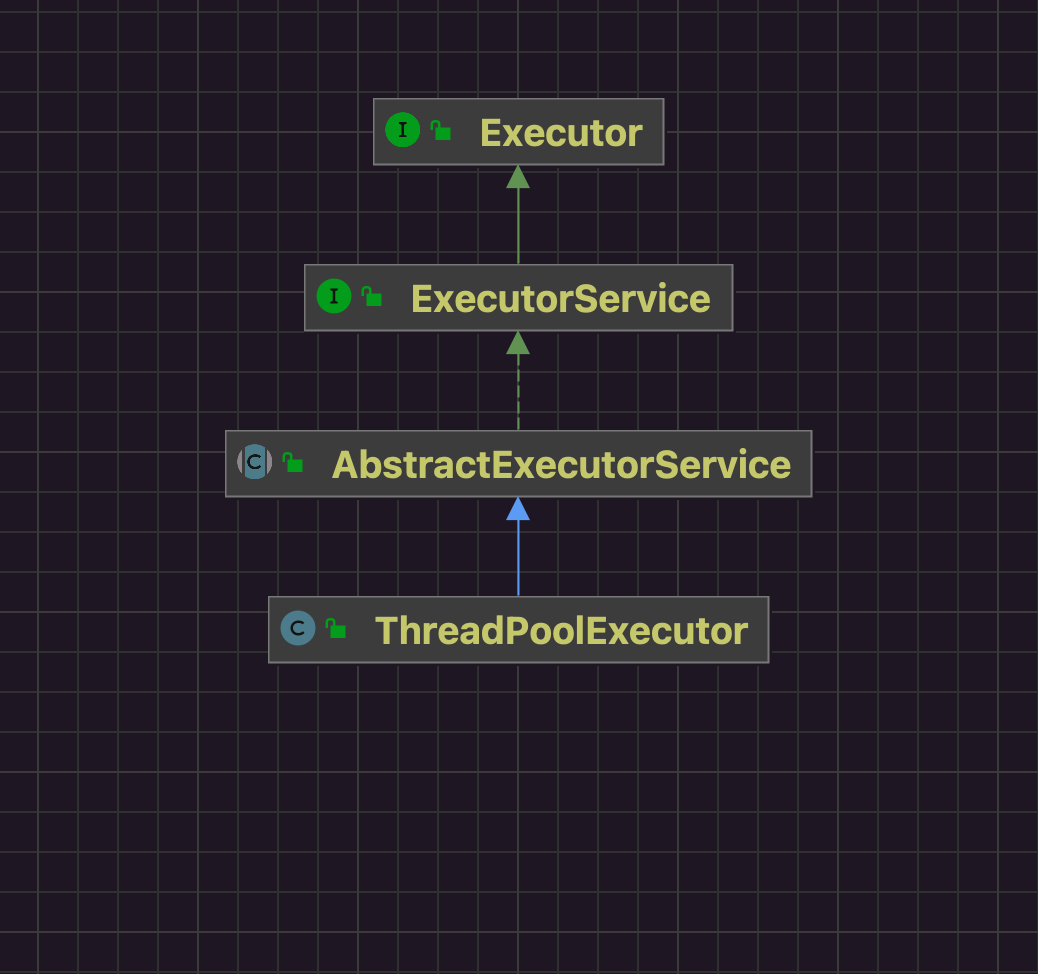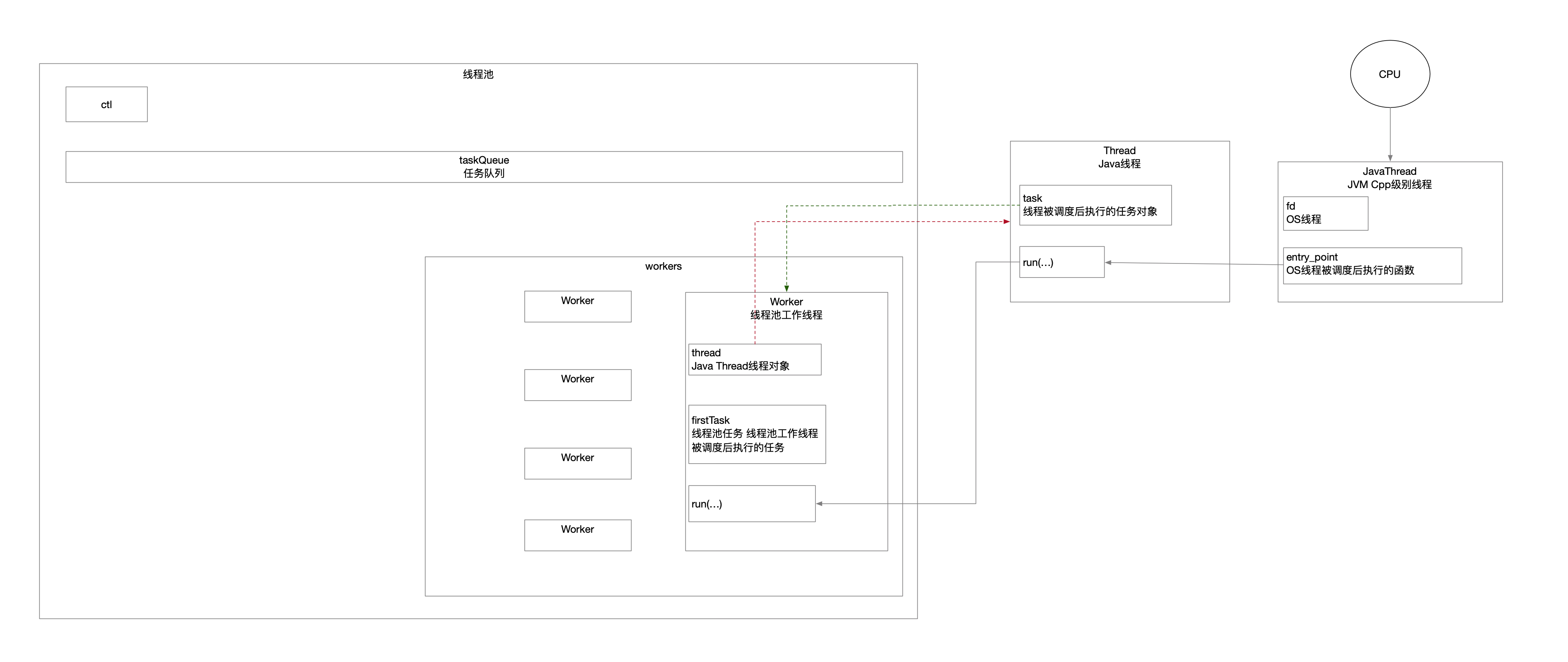1
2
3
4
5
6
7
8
9
10
11
12
13
14
15
16
17
18
19
20
21
22
23
24
25
26
27
28
29
30
31
32
33
34
35
36
37
38
39
40
41
42
43
44
45
46
47
48
49
50
51
52
53
54
55
56
57
58
59
60
61
62
63
64
65
66
67
68
69
|
final void runWorker(Worker w) {
Thread wt = Thread.currentThread();
Runnable task = w.firstTask;
w.firstTask = null;
w.unlock();
boolean completedAbruptly = true;
try {
while (task != null || (task = this.getTask()) != null) {
w.lock();
if (
(
runStateAtLeast(ctl.get(), STOP) ||
(Thread.interrupted() && runStateAtLeast(ctl.get(), STOP))
) &&
!wt.isInterrupted()
) wt.interrupt();
try {
this.beforeExecute(wt, task);
try {
task.run();
this.afterExecute(task, null);
} catch (Throwable ex) {
this.afterExecute(task, ex);
throw ex;
}
} finally {
task = null;
w.completedTasks++;
w.unlock();
}
}
completedAbruptly = false;
} finally {
this.processWorkerExit(w, completedAbruptly);
}
}
|

